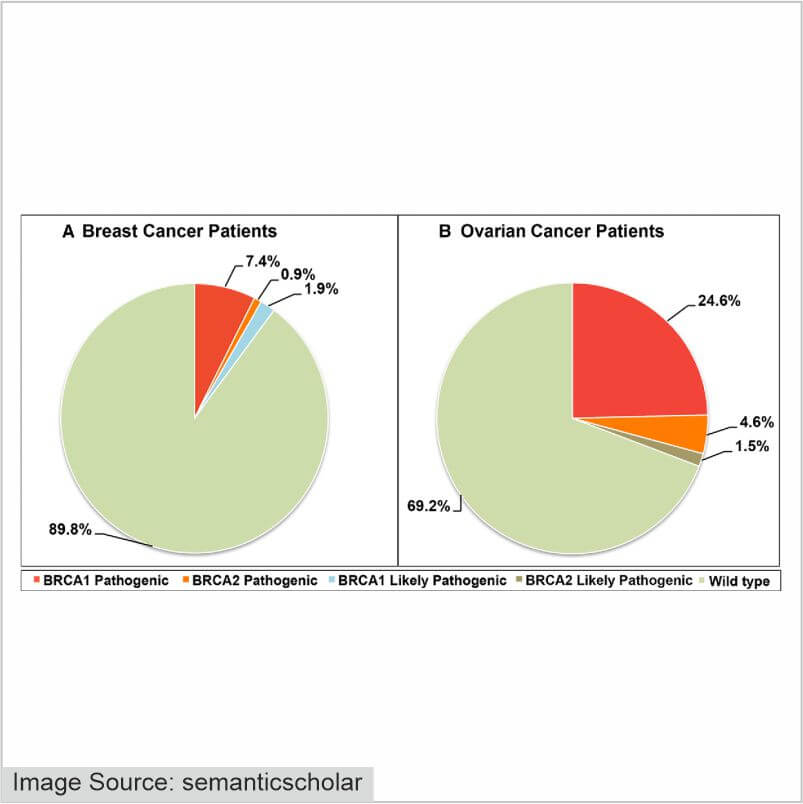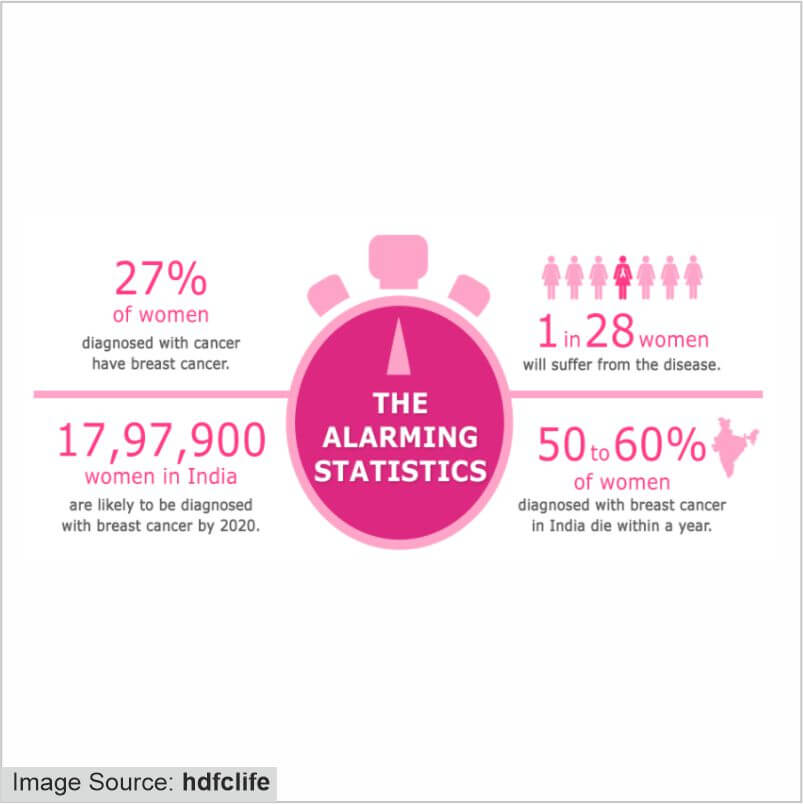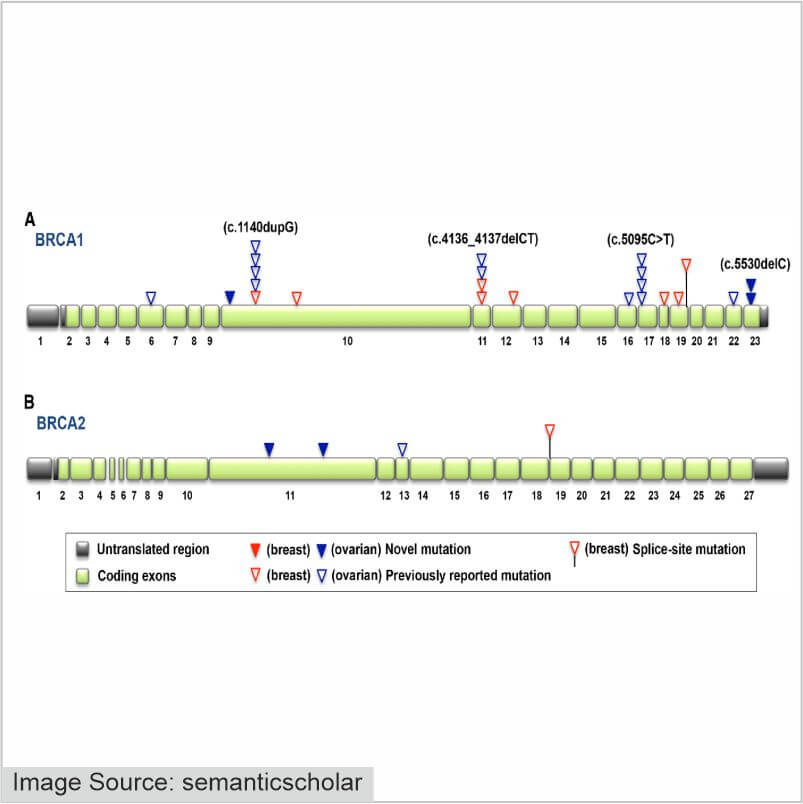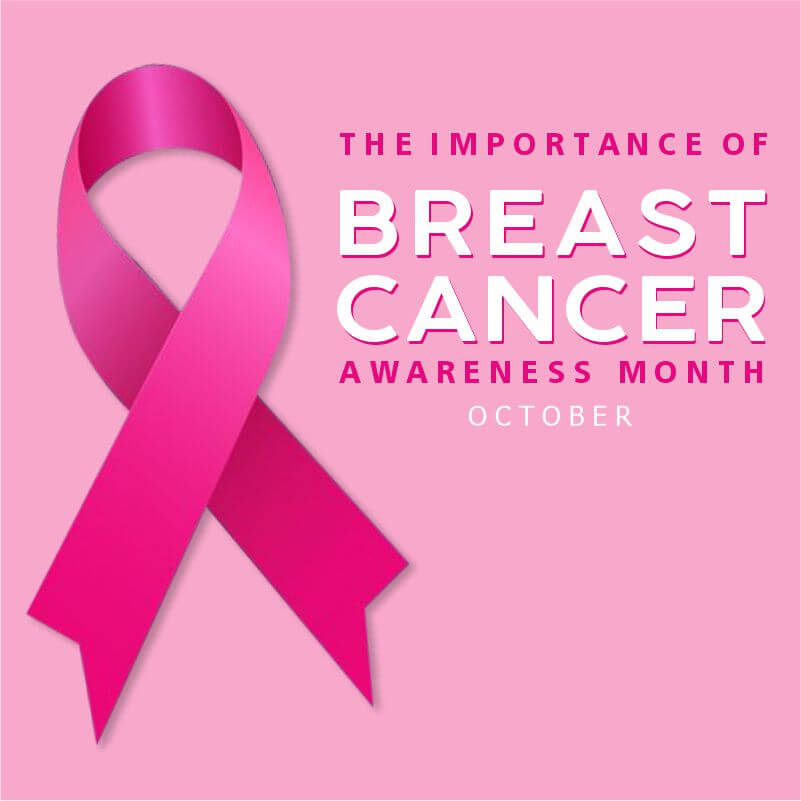October is Breast Cancer Awareness Month, an event to show support and encouragement to those living with breast cancer and also raise awareness about prevention and early detection. Breast cancer is the most common form of cancer diagnosed in women. The month of October is a reminder to support those in their fight against breast cancer, celebrate the survivors, honor those who have been taken too soon, and never give up hope.

According to the National Cancer Institute, Cancer is defined as "a disease in which some of the body’s cells grow uncontrollably and spread to other parts of the body." Cancer can develop nearly anywhere in the human body, which is made up of trillions of cells. Human cells normally multiply through cell division to generate new cells as required by the body. When cells age or get damaged, they die and are replaced by new cells. This organized process sometimes breaks down, allowing abnormal or damaged cells to grow and reproduce when they should not. These cells can combine to produce tumors-malignant or benign.

With being the most common type of cancer in women, breast cancer accounts for 14% of cancers in Indian women. It is reported that every four minutes, an Indian woman is diagnosed with breast cancer. Breast cancer is on the rise, both in rural and urban India. A 2018 report of Breast Cancer statistics recorded 1,62,468 new registered cases and 87,090 reported deaths.
There are two different staging systems for breast cancer. One is called
anatomic stagingwhile the other is
prognostic staging. The anatomic staging is defined by the areas of the body where breast cancer is found and helps to define appropriate treatment. The prognostic staging helps medical professionals communicate how likely a patient is to be cured of cancer assuming that all appropriate treatment is given.
CAUSES:
Researchers, to date, have not been able to find out the causes leading to the development of breast cancer. However, several risk factors could increase an individual's chances of getting this disease.
RISK FACTORS
Risk factors for breast cancer are things you can and cannot control. These factors affect your chances of getting a disease, but having a risk factor does not mean that you are guaranteed to get a certain disease.Here are some factors that one can control:
1) Excessive Alcohol Consumption
The amount of alcohol consumed raises the risk of breast cancer. Women who drink two or three alcoholic beverages each day have a 20% greater chance of developing breast cancer than women who do not drink at all.2) Being overweight after Menopause
Overweight or obese older women have a higher probability of developing breast cancer than normal-weight women.3) Taking Hormones
When used for more than five years, certain types of hormone replacement therapy (those that combine both estrogen and progesterone) during menopause can increase the risk of developing cancer. Certain oral contraceptives like birth control pills have been associated with a greater risk of breast cancer.4) Breast implants
Having silicone breast implants and the resultant scar tissue makes it more difficult to detect abnormalities on routine mammograms. To improve the examination, it is best to have a few extra images (called implant displacement views). An uncommon disease known as anaplastic large cell lymphoma (ALCL) has also been closely connected to the implants.Non-Controllable Risk Factors:
1) Growing older
The risk of being diagnosed with Breast cancer increases with age. A majority of cases are detected beyond the age of 50.
2) Genetic Mutations
Certain genes, such as BRCA1 and BRCA2, have hereditary alterations (mutations). Women who have inherited these genetic alterations are more likely to develop breast and ovarian cancer.3) Family history of Breast or Ovarian Cancer
You are at a higher risk if you have a first-degree relative (mother, sister, daughter, father, brother, or son) who has breast cancer. You are at a higher risk if you have more than one relative with breast cancer on each side of your family. Changes to genes such as BRCA-1 and BRCA-2 are examples of genetic mutations.4) Exposure to radiation therapy
People who have received radiation therapy to the chest or breasts before the age of 30 have a greater risk of developing breast cancer later in life.Breast Cancer in Males:
The major problem concerning breast cancer in males is the lack of awareness surrounding it. Awareness about breast cancer is just reaching many women in India. Several females residing in rural areas might still be unaware of the concepts of breast and ovarian cancer.
In men, the diagnosis becomes less likely to be suspicious of cancer due to lump, hardness, or pain in the breast region. The small amount of breast tissue in men makes an early lump harder to feel, making it more difficult to detect at an early stage. Most breast cancers happen to men between the ages of 60 years and 70 years.
In conclusion, male breast cancer, although a rare entity, does exist. It is often ignored in the community with medical attention being obtained at an advanced stage.

Ways to create Breast Cancer Awareness:
Every year, October is recognized as the month to promote Breast Cancer Awareness. Getting involved may seem overwhelming but showing support for breast cancer patients and survivors is actually easier than one may think.
Here are some ways to get started:
1) Wearing a Pink Ribbon
The pink ribbon is an international symbol for breast cancer. Wearing a pink ribbon, or a pink outfit is a simple way to express moral support for those who have been diagnosed with breast cancer.2) Encouraging your loved ones towards Mammograms
Cancer can strike anyone at any point. In fact, the majority of patients never imagined being diagnosed with cancer until it did. Knowing one's cancer risk factors can help with early discovery, making the disease easier to treat. Creating awareness by informing friends and family about who should get mammograms, who is at risk, and how to examine breasts for abnormalities. The more educated a society is, the better it will be resisting cancer.3) Help a Cancer Patient
If you know anyone around you who is battling cancer, help and support them by providing them with any kind of assistance they require. One could help them buy groceries, medicines, or as simple as walking their dog for them. Several chemo wards even take donations of clothing, scarves, and hats for patients. Reach out to local organizations to see what goods or services would benefit the community.This breast cancer awareness month let us be supportive of people suffering from this disease and stand together in their resolve to win this battle.
